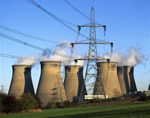 |
EPA Settlement Creates NSR Model for Carbon Black Industry
In November 2013, the EPA and the U.S. Department of Justice (DOJ) announced the results of a joint investigation of the nation’s second largest carbon black manufacturer for violations of the Clean Air Act (CAA). This action is especially significant because it was the first in the carbon black manufacturing industry and is intended to serve as a model for other industry members to meet compliance requirements of the CAA’s NSR provisions.
The investigation began in 2009 as part of the EPA’s National Enforcement Initiative to crackdown on emissions of harmful air pollutants from the nation’s largest sources. According to the EPA, the U.S. carbon black industry, which is composed of 15 manufacturing plants, currently does not have controls in place for emissions of nitrogen oxide (NOx) or sulfur dioxide (SO2), nor do any of the plants have continuous emissions monitors. This settlement will provide for such controls and monitors at three of the company’s manufacturing plants resulting in very substantial reductions in hazardous air pollutants.
According to the EPA/DOJ complaint, the three manufacturing plants, located in Franklin and Ville Platte, Louisiana and Pampa, Texas, allegedly violated the CAA’s NSR requirements between 2003 and 2009 when major modifications were undertaken at the facilities without first obtaining pre-construction permits or installing and then operating required pollution technology. In addition, the complaint alleges these actions resulted in the increase in emissions of NOx and SO2, which EPA contends are a major cause of respiratory and other human health problems and increase particulate matter when emitted into the air together.
Forget expensive calls to lawyers and consultants. With Enviro.BLR.com, you get instant access, 24/7. Try it out today and get the 2014 EHS Salary Guide, absolutely free. Download Now.
As a result of the investigation, a settlement was reached committing the company to invest an estimated $84 million on state-of-the-art emission control technology. At all three of the facilities the company is required to optimize existing controls for particulate matter (or soot), operate an “early warning” detection system that will alert facility operators to particulate matter releases, and comply with a plan to control “fugitive emissions” from leaks or unintended releases of gases. To better manage nitrogen oxide (NOx) pollution emissions, the company must install selective catalytic reduction technology to significantly reduce emissions, install continuous monitoring, and comply with stringent limits.
In addition, the company is also required to install wet gas scrubbers to manage SO2 emissions at the two larger facilities in Louisiana, as well as installing continuous monitoring and complying with stringent emissions limits. At the Texas facility, the company will now be required to comply with the lowest limit on the amount of sulfur in feedstock of any carbon black manufacturing plant in the country.
Everything You Need for Environmental Compliance
Enviro.BLR.com puts everything you need at your fingertips, including practical RCRA, CAA, CWA, hazardous waste regulatory analysis and activity, news, and compliance tools. Try it at no cost or risk and get a FREE report.
To demonstrate compliance with both installation and operations requirements the company is also required to meet comprehensive reporting requirements for construction and installation as well as emissions and monitoring of hazardous air pollutants, including any violation or the potential of violation of the consent decree or emission limits, and other requirements.
In case $84 million in technology investments is not enough of a motivational factor for other industry members, similar facilities should consider that the company will also pay substantial civil penalties and subsidize and implement several Environmental Mitigation Projects. The penalties include $682,500 to the United States and $292,500 to the Louisiana Department of Environmental Quality (LDEQ), a co-defendant in the case.
The company is required to spend not less than $450,000 on the Environmental Mitigation projects that include upgrading air-handling units at the Franklin, Louisiana Government/Courthouse Building, and installing similar emissions controls and other energy-saving equipment and devices at the Ville Platte, Louisiana City Hall and Civic Center, and the Pampa, Texas City Hall, Public Library and Fire Station.
